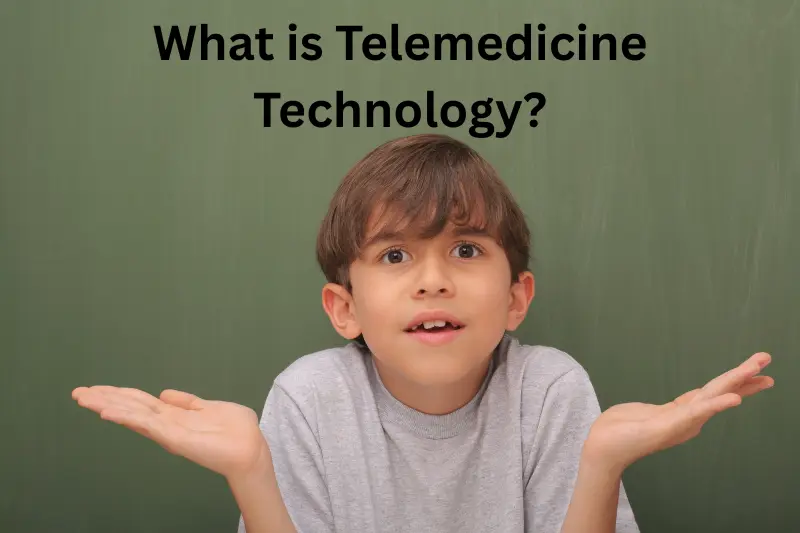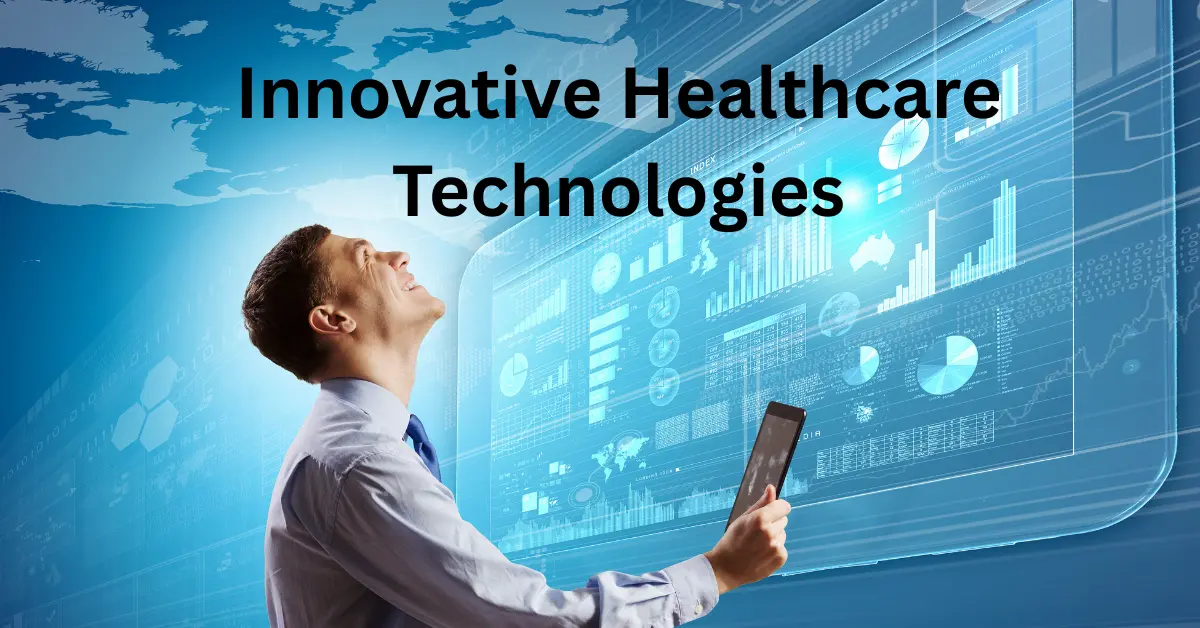In a world where speed and accessibility define success, healthcare is no exception. From virtual consultations to remote diagnostics, the landscape of medical services has dramatically evolved. One game-changing advancement leading this transformation is telemedicine technology. It’s no longer a futuristic idea—it’s happening now, reshaping how we connect with healthcare professionals and receive medical care. The blend of digital innovation and patient-first thinking has given rise to a system that values time, convenience, and efficiency.
This article explores every critical dimension of telemedicine technology, from its foundations and current applications to its growing impact on global health systems.
What is Telemedicine Technology?

Definition and Core Concepts
- Telemedicine involves the delivery of healthcare services through digital communication tools, allowing patients to connect with healthcare providers from a distance.
- It includes live video consultations, remote monitoring, and mobile health apps, all aimed at improving access and convenience.
- Healthcare professionals can diagnose, treat, and monitor patients without needing face-to-face interaction, which opens up possibilities for patients who face geographical, mobility, or time constraints.
Components of Telemedicine Technology
- Telecommunication Tools: Smartphones, laptops, and tablets equipped with video and audio capabilities form the backbone of telemedicine, making it easy to engage with healthcare providers remotely.
- Software Platforms: Telemedicine platforms such as telehealth apps and Electronic Medical Records (EMR) systems facilitate seamless communication and integration with healthcare practices.
- Remote Monitoring Devices: Devices like smartwatches, blood pressure monitors, and glucose meters allow continuous monitoring of vital health statistics, providing real-time data to doctors.
- Cloud and Data Storage: Secure cloud systems store patient records, making it easier for healthcare professionals to access and manage data at any time.
Types of Telemedicine Services
Synchronous (Real-Time Communication)
- In this model, both the patient and healthcare provider are present at the same time for a live consultation via video calls or phone.
- This is the most commonly used format in telemedicine and is ideal for urgent care, general consultations, and psychiatric services.
- Key Benefits: Real-time advice and immediate access to medical professionals. It is especially useful in scenarios like mental health counseling and virtual urgent care visits.
Asynchronous (Store-and-Forward)
- With asynchronous telemedicine, patients send their medical records, images, or test results to a doctor, who then reviews and provides feedback at a later time.
- This type of telemedicine is widely used in specialties like dermatology, where images of skin conditions can be sent to a professional for analysis.
- Key Benefits: Convenience for both parties, allowing patients to submit their concerns without having to schedule a specific time and wait for a diagnosis.
Remote Patient Monitoring (RPM)
- Remote monitoring is an essential tool in chronic disease management, where patients can continuously monitor their health statistics at home, sending the data to their doctors.
- Devices like wearable fitness trackers, blood glucose monitors, and blood pressure cuffs transmit data directly to healthcare providers, alerting them to any irregularities.
- Key Benefits: Enables real-time care, reduces hospital visits, and helps patients feel more in control of their health management.
Latest Innovations in Telemedicine Technology
Artificial Intelligence (AI) Integration
- AI plays a growing role in telemedicine, especially in preliminary diagnosis, symptom analysis, and triaging patients.
- Chatbots powered by AI can handle routine inquiries, appointment scheduling, and FAQs, easing the burden on healthcare providers and improving operational efficiency.
- Key Benefits: AI supports healthcare professionals in making faster, more accurate decisions by analyzing large datasets and providing real-time recommendations.
5G and IoT Advancements
- The advent of 5G networks has significantly improved telemedicine services, reducing latency and allowing for high-quality, uninterrupted video consultations.
- The Internet of Things (IoT) enables patients to monitor health metrics like heart rate, blood pressure, and glucose levels continuously through connected devices.
- Key Benefits: Enhanced real-time communication between patients and healthcare providers, leading to better care delivery, especially for elderly or chronically ill patients.
Virtual Reality (VR) and Augmented Reality (AR)
- Virtual Reality (VR) has been used to provide immersive therapy for pain management and anxiety, particularly in post-surgical recovery or in mental health treatments.
- Augmented Reality (AR) helps doctors, especially in surgical settings, by overlaying digital information over the patient’s body during procedures. This assists in planning and performing surgeries remotely.
- Key Benefits: VR and AR improve patient experience, reduce pain during treatments, and assist doctors in performing complex procedures remotely.
Blockchain for Medical Records
- Blockchain technology allows for secure, transparent, and immutable storage of medical data. Patients have full control over their health records, which can be securely shared with healthcare providers as needed.
- This technology reduces errors, fraud, and unauthorized access, making healthcare more secure.
- Key Benefits: Increased patient trust, better data integrity, and more streamlined access to medical histories across different healthcare systems.
Benefits of Telemedicine Technology

For Patients
- Convenience: Patients can access healthcare from the comfort of their homes, avoiding long wait times and travel expenses.
- Accessibility: Telemedicine breaks down geographical barriers, allowing patients in rural or underserved areas to consult with top specialists who might otherwise be out of reach.
- Continuity of Care: Regular consultations and check-ins with doctors are made easier, ensuring that patients with chronic conditions or ongoing health issues are well-monitored.
- Cost-Effective: Virtual consultations often cost less than in-person visits, and there are no travel or waiting room costs involved.
For Providers
- Efficiency: Providers can serve more patients in a shorter amount of time. Virtual consultations reduce overhead costs associated with maintaining physical office spaces.
- Improved Patient Engagement: Telemedicine enables more frequent touchpoints, improving patient involvement in their healthcare and promoting better health outcomes.
- Scalable Operations: Healthcare systems can reach more patients without needing to expand physical infrastructure.
For Health Systems
- Resource Optimization: Telemedicine helps in reducing overcrowding in clinics and emergency rooms by shifting non-urgent cases to virtual platforms.
- Data Utilization: Real-time data provided through remote monitoring enhances decision-making for providers and supports early intervention strategies.
- Pandemic-Ready: During global health crises like the COVID-19 pandemic, telemedicine became an essential tool in maintaining patient care while adhering to social distancing guidelines.
One read, and you’ll see things differently!
Achieve Mental and Physical Wellness with These Simple Tips
Discover Holistic Wellness Solutions for True Health & Balance
Achieve Your Health Goals with Personal Wellness Plans
Empowering Wellness Tips and Advice to Change Your Life
Game-Changing Medical Technology Advancements Today
Challenges and Barriers
Technological Limitations
- Internet Access: High-speed internet access is still a significant barrier in many rural and remote areas, limiting the reach of telemedicine.
- Platform Compatibility: Patients and providers may experience difficulties when different telemedicine platforms are incompatible, leading to technical difficulties during consultations.
- Digital Literacy: Not all patients, especially older adults, are comfortable with digital technology, which can hinder the effectiveness of telemedicine services.
Regulatory and Legal Hurdles
- Licensing: There are challenges related to licensing, as healthcare providers may not be licensed to practice in a patient’s location, especially when it involves international consultations.
- Data Privacy: Healthcare providers must comply with various national and international regulations concerning patient privacy, which can vary widely across regions.
Reimbursement and Insurance
- Limited Coverage: While insurance coverage for telemedicine has expanded, many insurers still have restrictive policies that limit the scope of telemedicine reimbursements, particularly for non-emergency cases.
- Complex Billing: The billing process for telemedicine services can be more complicated compared to in-person visits, with varying rules and reimbursement rates.
Final Thoughts
As we journey through the digital age, our approach to healthcare must evolve too. From improving access in remote areas to transforming the lives of those with chronic conditions, telemedicine technology is making healthcare smarter, faster, and more patient-centered. Whether you’re a healthcare provider, a tech entrepreneur, or a curious patient, understanding the nuances of this transformation is key to thriving in the new era of health.
FAQs
What is the main benefit of telemedicine technology?
The biggest benefit is convenience—patients can access healthcare from anywhere without needing to travel or wait in crowded clinics.
Can telemedicine be used for all types of medical conditions?
Not all, but it’s highly effective for non-emergency conditions like mental health, chronic disease management, follow-ups, and minor infections.
Is telemedicine secure and private?
Yes, most platforms use encrypted, HIPAA-compliant systems to protect patient data and ensure confidentiality.
How does telemedicine help in rural areas?
It bridges the gap by connecting patients in remote locations with specialists and services they wouldn’t normally have access to.
Do insurance companies cover telemedicine services?
Many do now, especially after the pandemic, but it varies by provider and policy—it’s best to check with your insurer directly.







